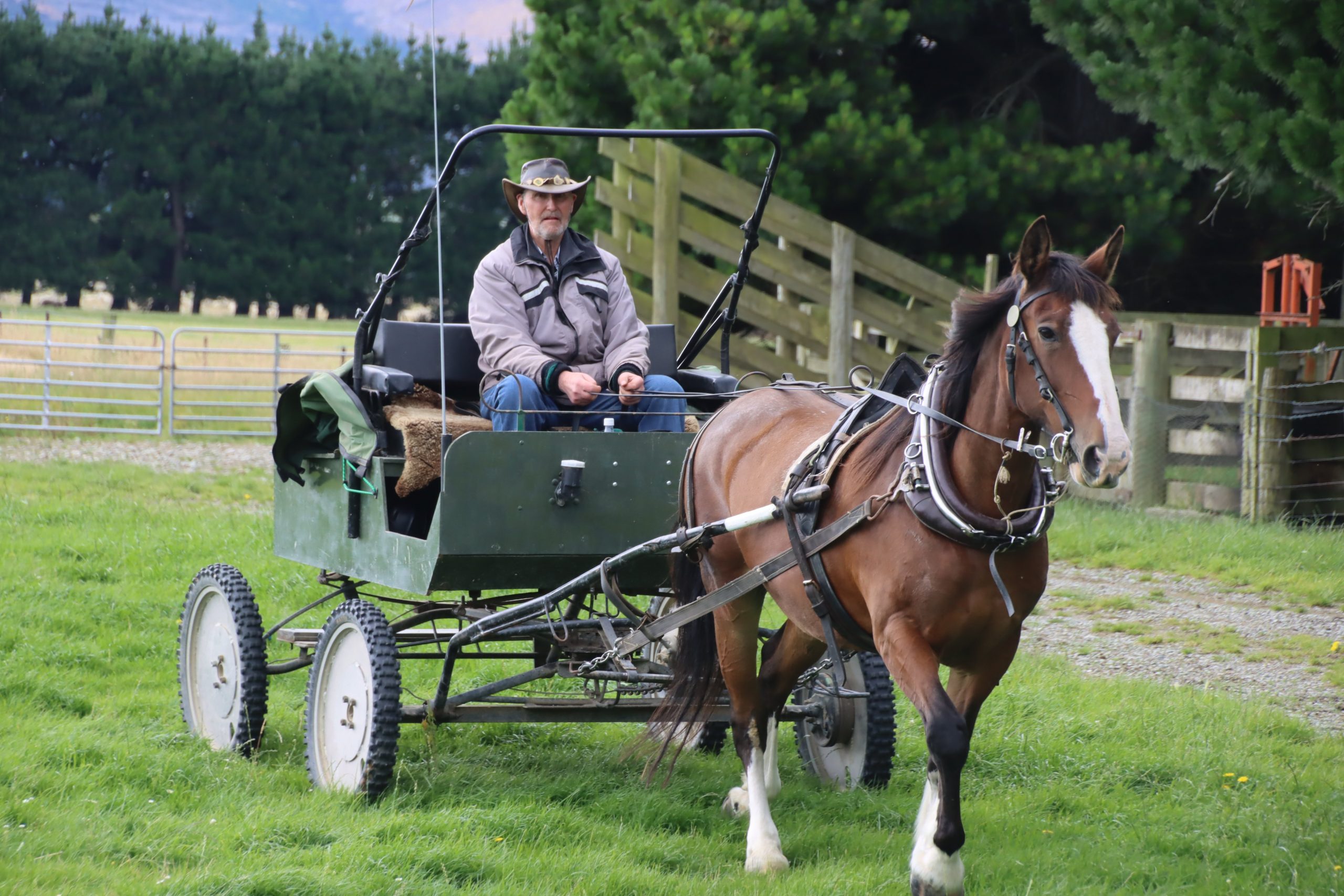The 31st annual Otago Goldfields Heritage Trust Cavalcade started this week and participants will start a journey throughout the South on 11 different trails, each ending at Waikaia on March 2. On Sunday The Ensign reporter Sandy Eggleston travelled to Mossburn to catch up with the light wagon trail members after their first day of trekking.
Taking part in the Goldfields Cavalcade is the “best week of the year” for Tony Daikee.
The Waipahi man and his horse Morgan are part of the light wagon trail which left Centre Hill Station near Mossburn on Sunday.
The trail will pass through Longridge Valley, Glenlapa Station and end at Waikaia on Saturday morning before all trails converge on the town for a grand parade through the main street and hoedown.
This was his 23rd cavalcade and he looked forward to the event every year, Mr Daikee said.
“I feel happiest behind a horse driving.”
About eight years ago Mr Daikee, 73, was diagnosed with Parkinson’s disease.
The Parkinson’s was affecting his mobility, he was often exhausted and he had bouts of vertigo, but on the trail the disease symptoms disappeared.
“I think I live on adrenaline all week, don’t get any vertigo, don’t get any sick feeling in the stomach like I do with the medication I am on.”
Port Molyneux dairy farmer Katy Button was his helper who gave a hand with tasks including taking the harness on and off Morgan.
“She’s essential.
“She’s a wee gem.”
It would likely be his and Morgan’s last cavalcade.
Trail boss John Black has completed 23 cavalcades, 20 as a wrangler and two as trail boss.
It was the camaraderie on the trail he enjoyed, Mr Black said.
“You meet people from all walks of life.”
There were six wagons and 21 riders on the trail who travelled between 30km-40km a day.
The first day’s ride had gone well and the overcast weather had kept temperatures cooler, he said.
“We could travel a bit faster, didn’t have to have so many stops.”
There had been two crossings across the Oreti and Windley rivers.
“It was a wee bit lumpy in the river crossings with the bigger stones, but the carts seemed to manage it all right.”
The route was chosen about a year in advance using a map and farmers were approached about travelling over their land.





